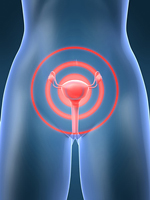Lymphoma is an oncological disease of the lymphatic tissue, which is associated with the damage to the lymph nodes and internal organs. The main symptoms of lymphoma are a significant increase in lymph nodes on the neck, in the armpits and in groin.
Content
The concept of lymphomas
 Lymphoma is an oncological disease of the lymphatic tissue, characterized by an increase in lymph nodes and damage to various internal organs, in which uncontrolled accumulation occurs «Tumor» lymphocyte.
Lymphoma is an oncological disease of the lymphatic tissue, characterized by an increase in lymph nodes and damage to various internal organs, in which uncontrolled accumulation occurs «Tumor» lymphocyte.
Lymphocyte - white blood cell, which is the main component of the body's immune system. During lymphoma as a result of unlimited division «Tumor» The lymphocytes of their descendants populate lymph nodes and various internal organs, causing a violation of their normal operation.
Term «Lymphoma» denote a large number of different types of diseases that differ significantly from each other in their manifestations and approaches to their treatment. All lymphomas are divided into 2 large groups:
- Lymphogranulomatosis (Other Tithes Hodgkin's disease)
- Non-Hodgkinsky lymphoma
The main symptoms of lymphoma
As a rule, the first symptom of lymphoma is a significant increase in the size of lymph nodes on the neck, in the axillary depressions or in groin. At the same time, in contrast to infectious diseases, increased lymph nodes are painless, their dimensions are not reduced over time and with antibiotic treatment. Sometimes, due to pressure from increased liver, spleen and lymph nodes, there is a feeling of overflow in the abdomen, breathing difficulties, driving pain in the lower back, a feeling of pressure in the face or on the neck
Other symptoms found in the lymphoma are:
- weakness
- Increase body temperature
- sweating
- weight loss
- Disorders of digestion
Varieties of lymphoma
The term non-Hodgkinsky lymphomas denote a rather large group of lymphoma, which are not Hodgkin's disease (lymphognulmatosis). The decision to belong to the lymphoma to the group of non-Hodgkinsky lymphoma or Khodgkin's disease is accepted after histological research of the sample of biopic fabric. If a microscopic study is found specific for Hodgkin's diseases of the Berezovsky Sternberg-Rida cells, then they are diagnosed with Hodgkin's disease. If these specific cells are not found, then the lymphoma is believed to the Needzhkinsky group.
Non-Hodgkin Limphomas have many subspecies that differ in histological picture, clinical manifestations and approaches to their treatment. Some types of lymphoma have a slow and favorable flow, sometimes do not require special treatment for a long time. Such lymphomas are called indolent. A number of other lymphomas, on the contrary, are characterized by rapid progression, lots of symptoms and require immediate origin. Such lymphomas are called aggressive. There are lymphomas with intermediate characteristics. Most often anomalous (incorrect) growth of lymphocytes begins in lymph nodes, while developing a classic lymphoma variant, accompanied by an increase in lymph nodes. However, lymphomas are found in which the lymph nodes do not increase, t.To. The disease primarily occurs not in the lymphatic node, but in various organs: spleen, stomach, intestine, light brain. Such lymphomas are called extrodal, that is, located outside the lymph nodes.
Stages of development of lymphoma
Determination of the lymphoma stage helps to understand the degree of prevalence of the disease. These are important information for the adoption of the right decision regarding the treatment program. Approaches to the treatment of initial (local) stages and common stages of lymphom usually differ. When electing treatment, not only the stage, but many other factors are taken into account:
- Type of lymphoma
- Results of additional studies (immunological)
- Patient State and Age
- accompanying illnesses
However, information about the stage of the disease is extremely important for the development of an effective treatment program.
In the classification of lymph, four stages of the disease were allocated, which can be conditionally designated as local (local, limited) - the first and second stage and common - the third and fourth stage.
The first stage of lymphoma is allowed to involve into the lymphism process of one field of lymphatic nodes. The second stage is allowed to involve in the process of two or more areas of lymphatic nodes on one side of the diaphragm (the diaphragm is a muscular leaf, which shares the chest and abdominal cavity). The third stage allows damage to lymphatic nodes on both sides of the diaphragm. The fourth stage of the disease applies besides lymph nodes to internal organs: heart, liver, kidneys, gut, bone marrow.









